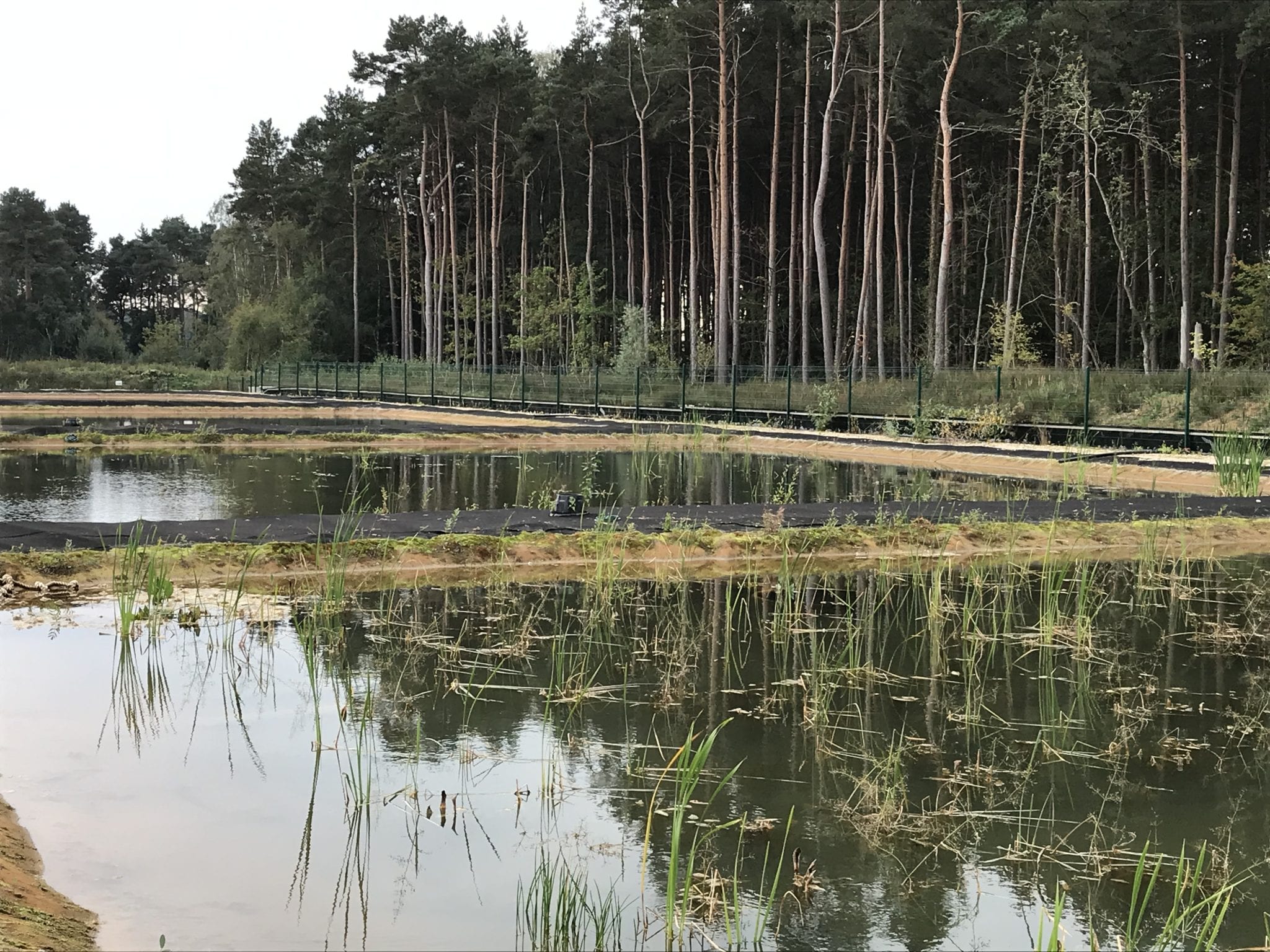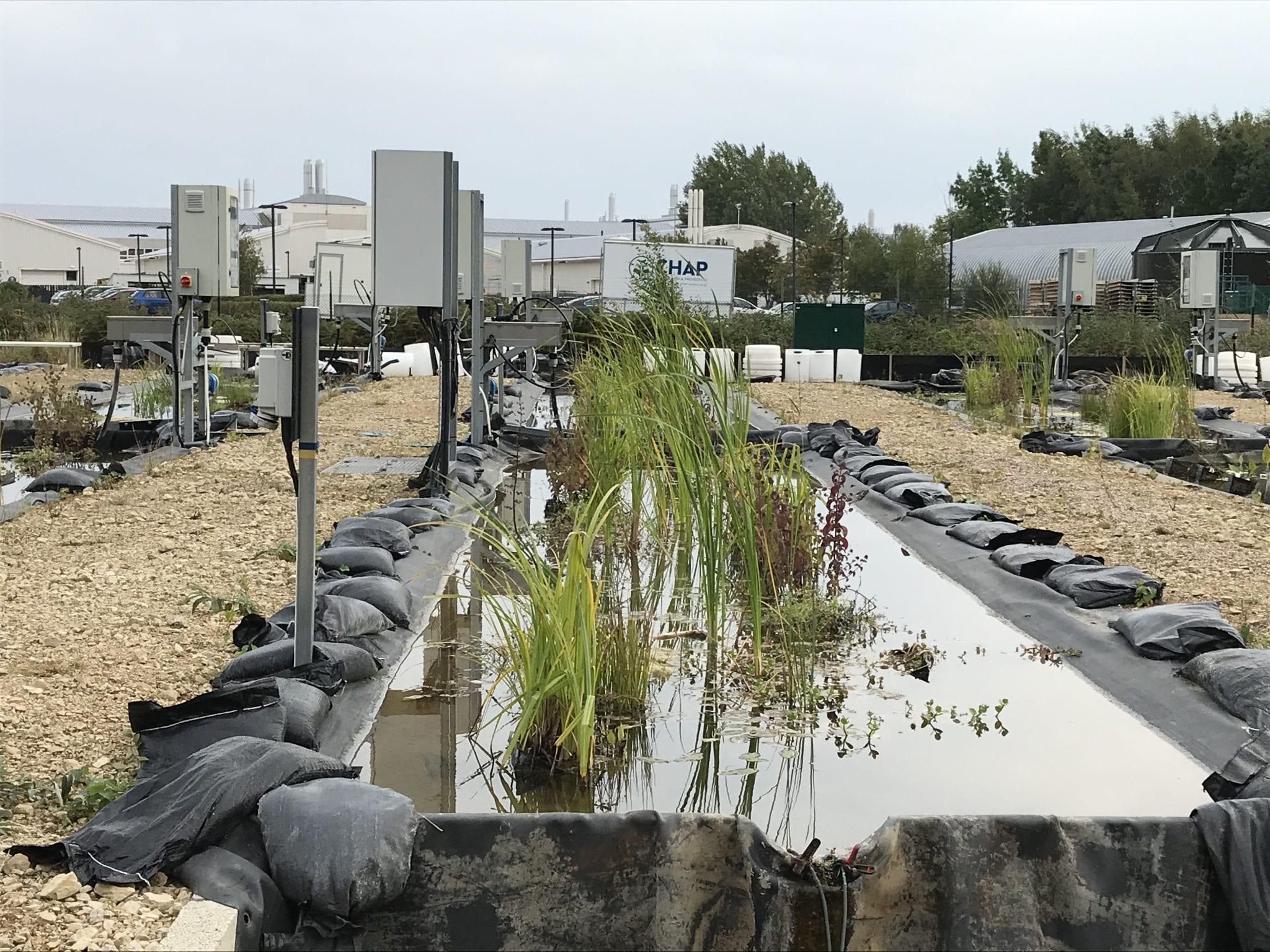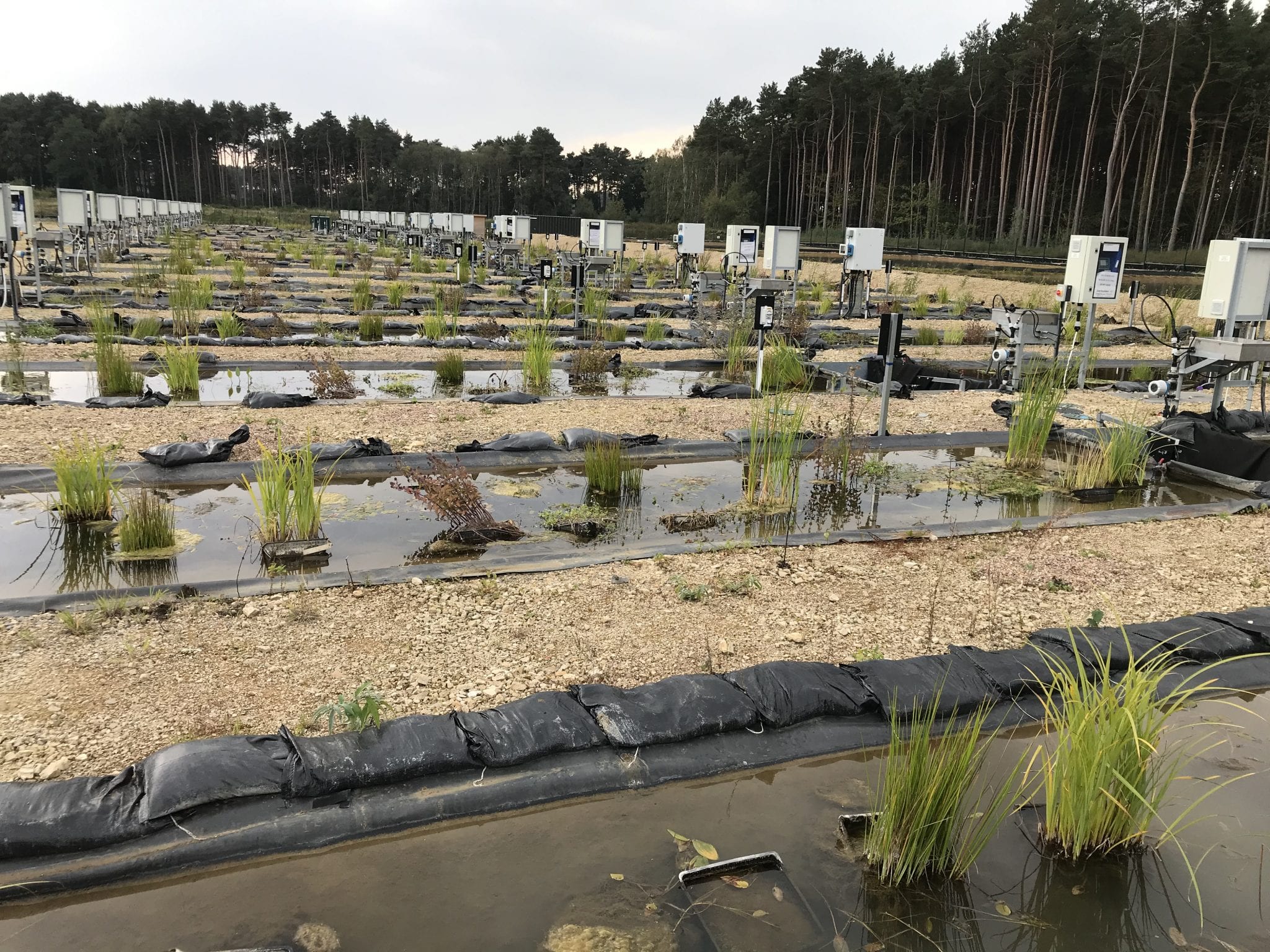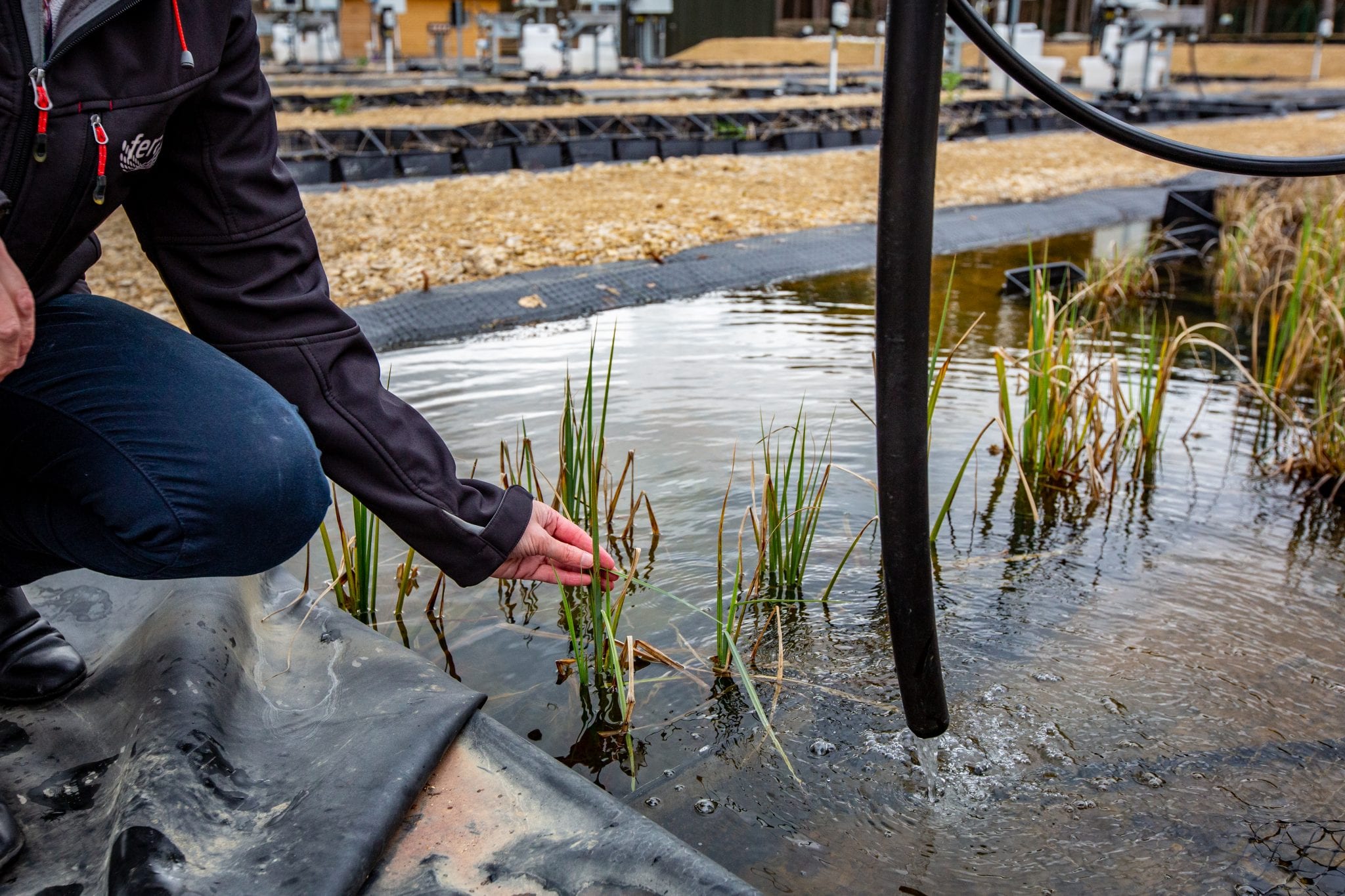E-Flows Mesocosm

The Edge of Field Waterbody Safety Assessment Facility (E-Flows) is the first of its type with fully flow through streams that can receive chemicals at the treatment rates predicted to occur in the environment, accurately reproducing a real environment to evaluate new products.
Based at Sand Hutton near York in North Yorkshire, the combination of the aquatic laboratory facilities, offered by Fera Science Ltd, for lower tier studies and the E-Flows mesocosm, managed and operated by Fera in partnership high-quality aquatic ecotoxicology data required for regulatory submission.













